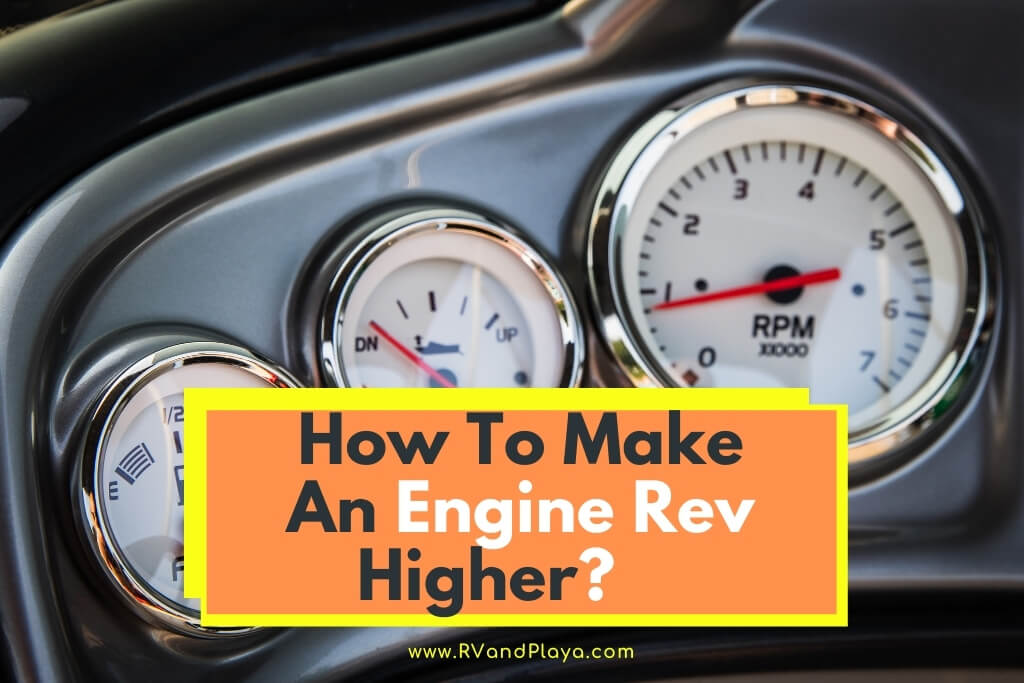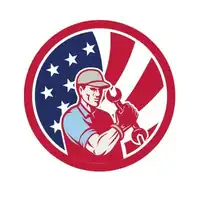Have you ever wondered how to make an engine Rev higher? Why some engines Rev high and their benefits? Look no more. We´ve got you covered.
The two main reasons or benefits you seek to increase your rpm are either to increase your power or to increase your idle rpm if they are too low. While you may solve the second reason relatively easily, the first reason has a more complex explanation.
So, how to make an engine Rev higher? To make your engine rev higher, you need a larger bore with a shorter stroke, enhanced valvetrain, drivetrain, and less reciprocal mass. You also need to increase your airflow and cooling as well as upgrade your exhaust system.
However, higher revs cause increased temperature, pressure, and increased stress on moving parts.
There are certain reasons why race cars can reach their astronomical revs, and the manufacturers build the engines to cope with these increased demands.
To make your revs higher, here are some of the factors your need to consider explained before taking the plunge.
Table of Contents
Why Can’t I Simply Make My Revs Higher?
There is considerable variation in manufacturer redlines, ranging from 100 rpm to 12,000rpm, yet each serves a specific and vital service.
If an engine exceeds its designated redline, it may cause damage to the piston and valvetrain when a valve opening and closing may become mistimed due to excessive revs.
Valve float results in compression issues or causes a valve to collide with a piston.
It is even possible that your engine may cause a connecting rod to get caught between your crankshaft and piston, which may cost you a whole new engine.
The Secret to a High Revving K-Series Engine >> Check out the video below:
Higher Engine Revs and Your Engine (Benefit)
Horsepower is equal to torque times rpm, divided by a constant (5252.) Simply put, rpm is a function of power.
While increasing your revs can and most probably will make your car more powerful, but it is not quite as simple as it seems.
Car manufacturers create rev limits to make the piston acceleration proportional to the size of the G-forces experienced by a piston connecting rod assembly.
A rev limit or redline ensures that G-force acting on the piston connecting rod assembly multiplied by their own mass are able to stand up the compressive force without compromising the tensile strength of their materials and their load-bearing capacity.
Simply put, merely increasing your revs to gain more power depends on your engine’s components and capacity.
To increase your revs without compromising your engine, you would need to address several issues that you may encounter in an engine manufactured with specific rpm limitations.
Read also: How To Make an Engine Rev Quicker or Faster? (Explained)
Bigger Bore and Shorter Strokes (Advantage)
Cars made for maximum power typically display bigger bore with shorter strokes. A bore is the diameter of the cylinder, while the stroke refers to the distance the piston travels inside the cylinder.
A bigger bore with a shorter stroke is one of the primary reasons an engine can maintain higher revs. Bigger bores typically mean bigger valves allow the increased airflow necessary for increased power.
Enhanced Valvetrain Function
You need to address your valvetrain as it is one of the essential parts of sustaining higher rpm. Modifications include enhanced springs and retainers and a custom ground cam suited to the increased rpm.
This enhancement is necessary because the higher rpm, the faster your valves have to open and close, and you may need to prevent a valve crash.
Enhanced Drivetrain Functions
You need to make sure that your engine can handle the increased horsepower generated by increased revs.
This increased power necessitates upgrading your rotating assembly rods and pistons as well as your transmission and clutch components.
Reduced Reciprocal Mass
A key characteristic of supercars or high revving cars, in general, is that they reduce the mass of their components by replacing them with lighter materials with enhanced tensile strength.
Cars such as the Porsche 911 GT3 use forged aluminum pistons, and many race cars use rotary engine systems eliminating the problems of pistons.
Increased Airflow
Your engine needs increased airflow to cope with increased speeds as air needs to enter and exit the engine faster. You may want to consider a cooler running thermostat, and a flow matched intercooler.
Decreased air intake temperature results in a more dense air intake, increasing fuel/air burn and engine output. At the same time, you would need to enhance your exhaust system.
What Exactly is RPM?
Rpm is a common term and stands for revolutions per minute. When it comes to cars, it measures how many complete revolutions your crankshaft makes measured in one minute.
Typically the higher your rpm, the faster your engine spins, and the more power is generated. The power of your vehicle or horsepower is measured by torque x rpm.
The force delivered to the crankshaft is your torque, while rpm is a measurement of how fast your engine is spinning.
Your tachometer displays rpm in measures of 1000, so if your tachometer measures 4, it is turning at 4000 revolutions a minute. Manufacturers place redline or rev limits to protect your car’s components from damage.
How Do I Increase Low Idle Revs?
To make your engine rev higher due to low idling, troubleshoot for causes, reset the PCM (powertrain control module) and follow your particular car’s unique relearn procedure.
Your engine idle speed is measured in the rpm that manufacturers designed your car to run when your engine is warmed up and stopped in park or neutral.
Generally, your idle speed should be between 600 to 800 rpm, depending on how many cylinders your car has or the transmission type. Idle is maintained by the throttle body working with your car’s PCM.
Increasing or decreasing the engine idle speeds on the older carbureted vehicles is as simple as turning an idling screw and adjusting your fuel/air mix. However, modern cars do not have such a provision, and your engine idle speed is programmed.
You can not adjust your idle speed as your PCM adjusts the idle speed automatically.
Why is My Idle Revs Low?
If your vehicle has an electronic throttle, you will have to check your ECU for Diagnostic Trouble Codes.
You will need a scan tool to find out what DTCs your vehicle is experiencing, or you could ask your local auto parts retailer for assistance in scanning. Otherwise, you may troubleshoot two frequent causes.
Your Throttle Body Is Dirty
When your throttle body becomes clogged and dirty may prevent your PCM from relearning engine idle speed.
The throttle body blade may attract carbon deposits over time, which may prevent it from closing correctly.
This interference means that your PCM may adapt to an incorrect idle memory when the memory is cleared.
One of Your Sensors Has Malfunctioned
Your PCM may not be able to adjust your idle speed if data is missing from your sensor. Your car may still run on its idle speed memory until you lose power through a battery change or service.
To relearn your vehicle, the correct idle settings follow your car user manual for your unique relearning process.
If cleaning and relearning do not sort out the problem, you should check for issues in:
- Your Throttle Position Sensor
- Vacuum leaks in your hoses or intake manifold gasket
- Bad spark plugs
- Faulty Engine Coolant Temperature sensor
- Fuel Injection issues
- You may issue with your Electronic Throttle Body.
Conclusion
Often people are so enamored of supercars that they attempt to raise their revs to imitate their idols. Unfortunately, without increasing the capacity of your engine to cope with raised rpm, you may be doing more harm than good.
You will vastly reduce your fuel economy and your engine’s lifespan if you don’t consider the consequences of raising your rpm.
Here are some of my favorite tools & equipment´s
Thank you for reading this article. I hope it helps you find the most recent and accurate technical and repair information for your car. Here are some tools that I use as an automotive technician and hope you´ll also find helpful.
There are affiliate links, so if you do decide to use any of them, I´ll earn a small commission. But in all honesty, these are the exact tools that I use and recommend to everyone, even my own family. (NO CRAP)
To see all my of most up-to-date recommendations, check out this resource that I made for you!
References
https://www.motortrend.com/how-to/1111chp-how-to-increase-engine-rpm/
https://en.wikipedia.org/wiki/Overspeed
Recent Posts
How to Remove a Catalytic Converter Without Tripping the Check Engine Light
Have you ever wondered how to remove a catalytic converter without tripping the check engine light? Well, look no more. We´ve got you covered. Paying a mechanic to remove and replace a bad...
Have you ever wondered how you can make your engine Rev faster or quicker? Look no more. We´ve got you covered. If you want to increase your rpm, there are typically two motivations: either your...


